| Disclaimer! With today's heightened airport security, particularly in the United States, spotting and aviation photography is viewed as a suspicious activity and may result in the spotters/photographers being approached and questioned by local and airport authorities. The information presented on Photovation's spotting pages represents legal activities at the time we spotted at the subject airport, however, there is no guarantee you will not be stopped, questioned and told to leave or worse. Your decision to visit these areas is your own free choice and whatever happens is your responsibility. We advise you to stay within the letter of the law and act responsibly so we can continue to enjoy our sport freely. |
Heathrow International Airport - LHRLast
visited: April 2003 If you ever get the chance to go to Heathrow to spot or do aviation photography, Anne and I strongly recommend you jump at the chance. It's an absolutely wonderful and fun airport to spot at for numerous reasons. First, it's Heavy Heaven. Because of heavy air traffic into the UK with Heathrow as its main airport you won't see many aircraft smaller than an A319. The puddle-jumpers are relegated to the other airports surrounding London. For Anne and I the Boeing 747 is the most beautiful aircraft to watch and photograph and, at Heathrow, there seems to be a steady stream of them all day long from carriers around the world. Second, there were no long lulls between operations. It was one aircraft after another with no more than two minutes between them and often less. Third, they are a two runway operation and you can set your clock at the times they will change runways. Because of noise abatement rules they change runways precisely at the same time each day. And, last, you won't be alone. Heathrow is a spotter's Heaven. You'll see many other spotting and photographing the constant stream of aircraft alongside you. It seems the young and the old (and all ages in-between) enjoy this sport in the UK. More about Heathrow's system of runway alternation: Heathrow operates in a westerly mode, runways 27L/27R, approximately 70% of the time (annually). There is some seasonal variation where in the summer months it's approximately 80% westerly operations and in the spring and autumn easterly, runway 09L/09R, operations are more common. When westerly operations are in force there is a daily alternation of the active runways to alleviate noise disturbance to local residents. One runway is designated the arriving runway and from 7:00 a.m. until 3:00 p.m. and the other as the departing runway. Precisely at 3:00 p.m. the runway usage alternates until the last scheduled departure of the day. This system of runway alternation is in effect for one week, from Monday to Sunday, when it is reversed for the following week. There is no runway alternation when easterly operations are in effect. Want to read more about Heathrow's system of runway alternation? Click here! This link also allows you to access the publish alternation schedule for Heathrow. |
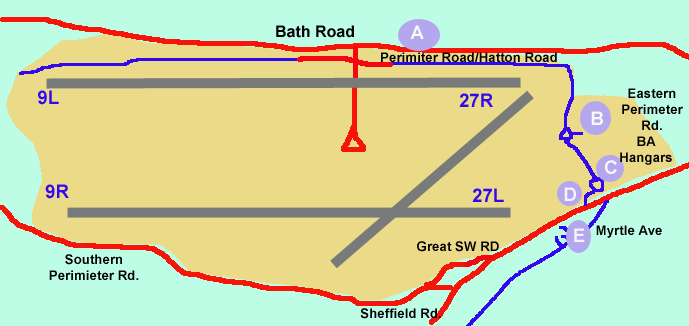 A basic map just to give you an idea of the layout and locations for spotting at LHR. All of these locations can be accessed using public transportation. |
|
The downside to London, of course, as you've all heard can be the weather, but don't let that stop you. There's plenty to see in and around London to take up those days when the weather is bad and you can't take photos. London is a wonderful city and you should take some time to enjoy it while you're there. Don't just take pictures of aircraft. As you can see our spotting during our trip was all confined to the west side the airport as the 27s were in operation the entire time. I understand you can get some good departure shots from aircraft departing on the 09s, but we didn't get that chance. Now, let's see the photos ... Spotting at LHR is easy. Not at all like JFK where there are multiple runways in simultaneous use and you can never depend on what will be where. At LHR they're either using the 09s or the 27s, one for arrivals and one for departures. From 6:00 a.m. (not certain about this time, but I believe it's correct) until 3:00 p.m. (certain about this time) arriving aircraft will land on one runway and departures will be on the other. And, promptly at 3:00 p.m. they will switch. This is further carried out on a weekly basis by switching on Sundays the arrival/departure runways. For example: If they are landing on 27L this week from 6:00 a.m. to 3:00 p.m., next week (not sure if it's effective Sunday or Monday) they will be landing on 27R from 6:00 a.m. to 3:00 p.m. Certainly does make it easy to plan where you're going to take your photos from. Important! (The mm indicated under each picture appear as 200 mm/300 mm The first number represents the actual mm used when the photo was taken. The second number indicates the digital factor, which on the D100 is 1.5, multiplier. To get an equivalent shot with a non-digital camera or one that does not have a multiplying factor you would need the equivalent mm of the second number to get the same image size. Point A - Renaissance Hotel, Bath Road, Hounslow, Middlesex: If you're doing aviation spotting and photography I can't think of a better place to stay than the Renaissance Hotel at Heathrow. Be sure to ask for a runway view on the third floor when you make your reservation and follow up when you check in. I also understand the hotel offers a "spotter's package rate" so you might want to check it out. The good news is that you have an excellent view of 27R from your room. You can take some nice taxi and beginning takeoff roll shots if they're departing 27R and some nice touchdown zone shots if they're arriving on 27R. You're sure to get both since Heathrow faithful changes runways at given times during the day. The bad news is that you're shooting through glass, sometimes two layers of it, and you know how that can be, but if the weather is nice you can get some good photos. The samples I've included will give you a good example of what the photos look like in different weather and lighting conditions. Now, some shots from our 3rd floor room to show you the kinds of pictures you can expect. These are all digital and are the full frame shot with no cropping and have not been post processed to improve quality. |
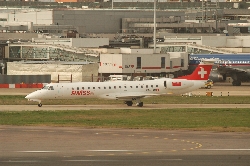 310/465 mm |
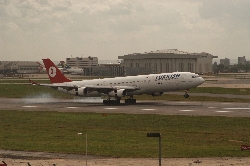 102/150 mm |
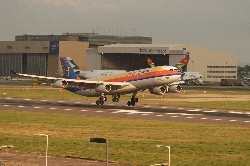 122/183 mm |
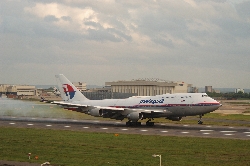 86/130 mm |
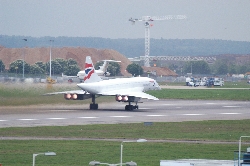 400/600 mm |
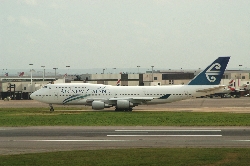 120/160 mm |
|
With the exception of the Concorde shot (above) all of the photos were taken from our room on the 3rd floor of the Renaissance Hotel. The Concorde shot was taken from an end window in the hallway on the 3rd floor which is why it's at full zoom. Point B - For arrivals on 27R: No doubt if you stay at the Renaissance Hotel you will become familiar with the 285 (buses 555, 566 and 567 also take the same route) bus that runs from Bath Road (I believe that's the name of the road) to the Hatton Cross Underground Station (Point D). From the hotel to Hatton Cross and return is in the free zone so it doesn't cost anything and is convenient. With stops and traffic it's about a 15 minute ride. Along the way you can get off and visit Points B and C. This location is excellent for inbound shots on 27R, however, you will have to keep your eye out for the ever present light poles that like to get in the way. Believe me, I know. I have plenty of pictures of them. If you exit the bus just at the turn it's a short walk to a traffic circle (or as the Brits prefer, a roundabout). Take the left onto Eastern Perimeter Road and you'll see a series of huts on the right side. Walk down about two or three huts, find a place between the light poles and shoot away. |
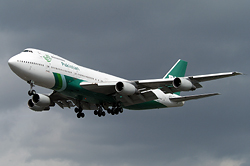 80/120 mm |
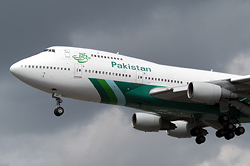 80/120 mm |
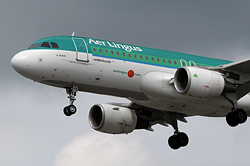 165/250 mm |
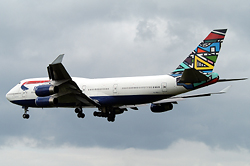 80/120 mm |
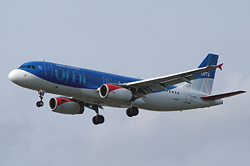 120/200 mm |
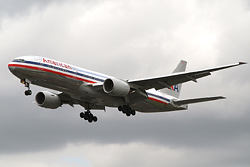
90/135 mm |
| Point C - For arrivals on 27L: Leaving Point B you can walk to the Hatton Cross Underground in about 10 minutes. Along the way you will pass by the large gates at the British Airways hangar. Occasionally they will halt the traffic and open the gates to tow some aircraft, everyday for the Concorde, from the hangar over to the terminals. While we didn't stick around for this event many have and you can see the photos on Airliners.Net. After you pass the first series of hangars you'll notice a BEA Trident behind the fence with stubby wings. I understand it's been refurbished, but you can't get near enough to get any good pictures without obstructions. |
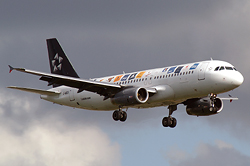 400/600 mm |
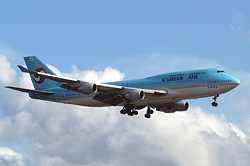 135/205 mm |
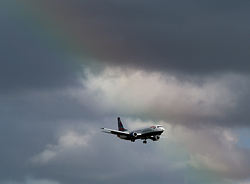 210/315 mm |
| Point D - For arrivals on 27L: This is the Hatton Cross Station stop for the Underground. I wouldn't recommend your spending a lot of time here as the Myrtle Ave. open field is just a five minute walk away. But it can be useful if the light is on the wrong side for the Myrtle Ave. field. There are lots of obstacles and overhead wires, but you can still get some decent shots. |
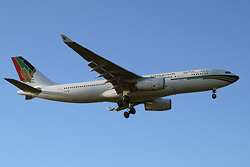 60/90 mm |
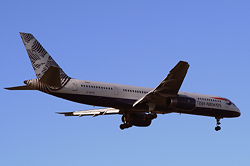 80/120 mm |
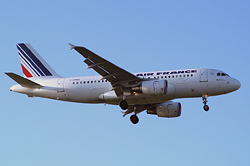 100/150 mm |
|
Point E - For arrivals on 27L: Arriving at the Hatton Cross Underground station exit the bus, walk through the bus terminal, cross the highway and the light and walk to your right abut 1/4 mile. Not far after you pass the runway lights for 27L you will see an open field on your left. Make yourself at home as this is am absolutely wonderful spotting location. Excuse me while I relate what I think was a relatively humorous story that speaks to the popularity of aviation spotting in the United Kingdom. Anne and I woke early one morning and immediately headed over to the Myrtle Ave. field. Arriving at the Hatton Cross station we noticed that the light had not fully moved over to the correct side for shots at the field so we hung out by the station and shot a few until the light had sufficiently crossed to the other side (see shots above). Arriving at the field we walked the path from the street toward Myrtle Ave. to avoid walking on the grass still wet with dew. Then we cut across the grass toward a small concrete slab next to the bushes where we could stand and stay dry. Just after we arrived we noticed an older woman, I would guess in her 70s, coming from Myrtle Ave. She was carrying a lawn chair and a relatively large bag and was dressed in a skirt, jacket and hat. I was a bit surprised when she cut off the foot path and started heading over toward us. Arriving nearby we exchanged morning greetings. She then went about 20 feet away from where we were and reached into her bag to pull out a large plastic spread. She neatly unfolded it and stretched it out beside her on the ground. She unfolded the lawn chair, placed it on the outstretched plastic and took a seat. Then with mechanical precision she reached into the bag and pulled out a block of foam and placed it beside her on the plastic. With that same precision she reached in to pull out a 35 mm camera and placed it gently on the foam. She continued this precision movement for several more items including her spotter's record book. As a plane approached that interested her she would stand, frame the shot, take the picture (just one shot mind you), return to her seat, pick up the book and record the aircraft's registration number. She repeated this for any aircraft that interested her. Surprisingly to me, she wasn't the least bit interested in most of the foreign carriers, but she was definitely interested in all British Airways flights. Anne and I stayed at the Myrtle Ave. field until just after noon when we returned to the hotel to meet a friend who had just arrived. After lunch we returned to the field and found her still sitting there just like we left her. We all stayed until 3:00 p.m. when they changed 27L over to the departure runway and we all then left. Forgive me for saying this as I certainly don't intend to offend anyone, but her whole manner was what I would consider to be very British. You know, that business only attitude and maintaining the "stiff upper lip" vision that we foreigners believe about the British. It did show me exactly how popular aviation spotting and photography is in the United Kingdom. |
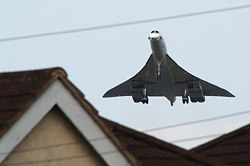 360/540 mm |
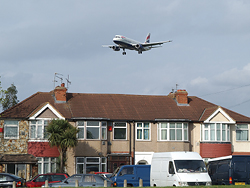 52/78 mm over homes on Myrtle Ave. |
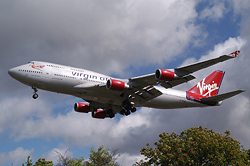 34/50 mm |
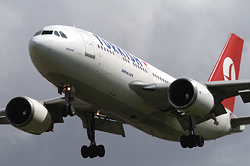 200/300 mm |
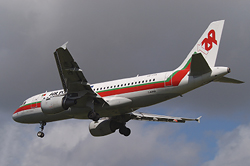 80/120 mm |
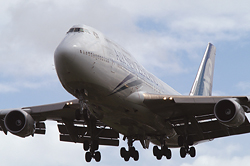 260/390 mm |
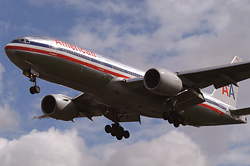 105/160 mm |
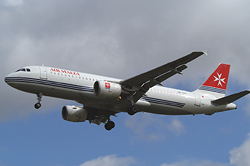 80/120 mm |
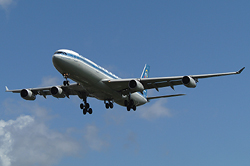 86/130 mm |
|
|
||